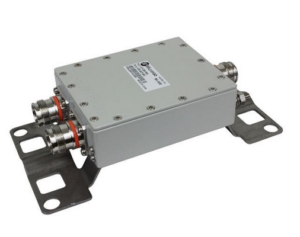One of the most critical steps that Microlab does in creating products is to develop partnerships with the equipment OEMs and wireless carriers, Darioush Charepoo, Microlab Principal Solutions Architect, told Inside Towers. The partnering process provides insight into meeting clients’ needs as Microlab designs and manufactures high-performance components such as dividers, directional couplers, and filters.
“When we partner with our customers, we get to delve a little bit deeper into their network and some of the challenges that they may have,” Charepoo said. “By combining our design and product expertise, we can overcome any site-specific deployment challenges, and we can meet their immediate requirements and needs.”
Microlab brings together different teams within their customers – including design and engineering, planning, RF engineering, construction, and operations. “We try to take into consideration what each group needs when we’re designing a certain component, whether it’s from an installation perspective or ongoing operation,” Charepoo said. “We look at the entire lifecycle of the network.”
Carriers have access to different frequency bands in various venues, states, and areas, which must be considered when making combiners. Another factor is the particular flavor of radio and its power limitations. Finally, manufacturers build their radios with different feeds, whether a DAS radio or a RAN radio. It all necessitates Microlab to maintain a broad range of products.
“We take all the variables into consideration when we design the signal combining and distribution products,” Charepoo said. “Therefore, we have a wide variety of unique products to address the needs of a Mobile Network Operator’s (MNO) wide spectrum portfolio for network densification.”
In the past, Microlab has introduced the BK-3001E Triplexer that combines spectrum in the PCS and AWS bands with the Broadband Radio Service (BRS) band or 2.5 GHz. T-Mobile uses BRS to inject its 5G NR signal into in-building DAS networks. The BK-3008E Triplexer was also introduced, which combines 617-960 MHz, 1695-2690 MHz, and 3400-4200 MHz spectrum bands. This allows the carrier to inject its BRS signal today and then add a C-band spectrum when it is clear, without installing new equipment, Charepoo said.
Microlab has had a combiner– the BK-261 In-line Diplexer – which combines the C-band and NR-U bands. “It’s been a pretty popular choice amongst carriers and third-party neutral hosts, such as Crown Castle International, American Tower Corporation, and Mobilitie,” Charepoo said. “The unit has an extensive frequency range with minimal loss for maximum flexibility, which can provide the benefit of the same controlled coverage of the higher frequency services with the DAS.”

The coming year will be devoted to finding combining solutions from a venue or in-building perspective. Much of the passive infrastructure in place today may not support BRS, the C-band, or the CBRS spectrum, according to Charepoo.
“From an injection perspective, bringing that C-band signal into a deployed network, you’re going to need a combiner, hybrid coupler, or a filter,” he said.
The ability to create those solutions goes back to what Charepoo thinks is most important – partnerships with the manufacturers and the carriers. Microlab’s mid-band product portfolio is a result of it.
“This is why we partner with the RAN OEMs and the DAS OEMs,” he said. “We understand their combining challenges and needs. How to combine the remote radios and the DAS remote radios? How to combine your C-band remotes with your existing remotes?”
As a result of these partnerships, Microlab prioritizes what products it needs to provide for the OEMs and their customers to deploy their new spectrum within the venue space, outdoor DAS networks, or other areas.
For more information, visit https://microlabtech.com/.
By J. Sharpe Smith, Inside Towers Technology Editor





Reader Interactions